
In Focus: The electric pace of new products coming to market
As the season kicks off in Europe, the number of electric boats and motors is already well above the 2022 pace of development. With progress moving so quickly, it is impossible to catalogue every new boat, motor or collaboration entering the market. In this round-up of electric marine news, MIN looks at a range of exciting products and ideas from both emerging startups and established legacy manufacturers.
Until recently, electric boats have largely been for those who want a quiet and clean boating experience with speed well down their list of priorities. This has begun to change, though, and the last 12 months have seen the introduction of faster boats and higher-power motors.
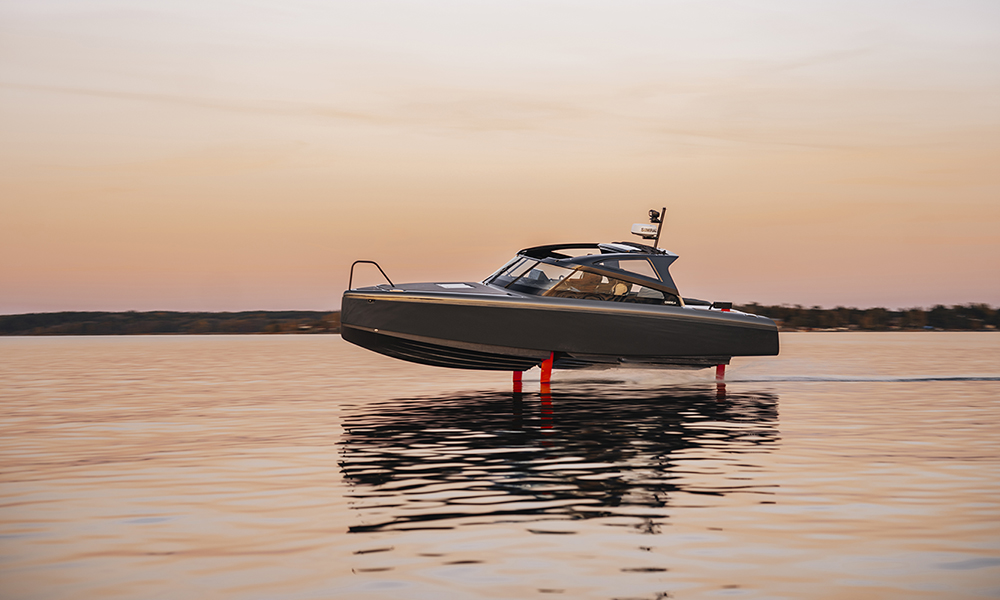 Candela 8
Candela 8The Candela 8 is probably the best-known of these electric sportsboa. Since its release in early 2022, the model with computerised hydrofoiling technology at its core has clocked up over 150 orders. Demand is so great that Candela has partnered with Swedish EV maker Polestar for batteries and charging systems to be able to rapidly scale up production.
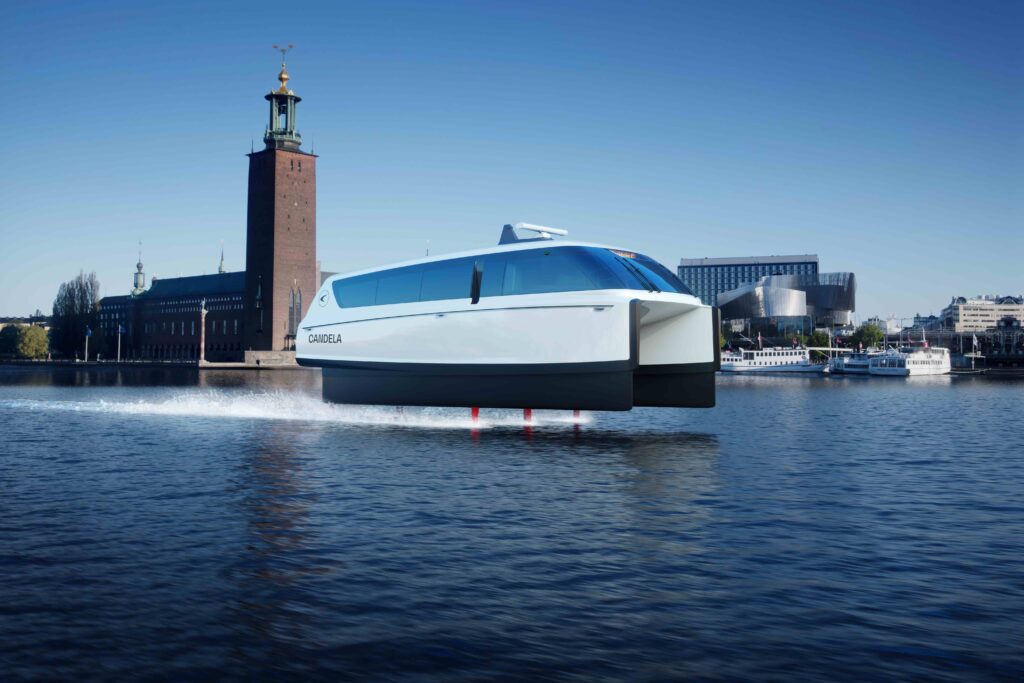
Candela is also due to launch its water taxi/ferry shuttle in Stockholm. The 150-passenger foiling ferry from Ireland-based Artemis Technologies is scheduled to start its Belfast-Bangor service in 2024.
Another Swedish company, X Shore, launched the X Shore 1 in Q3 2022 as a smaller and less expensive option to the Eelex 800, which debuted in 2019. The X Shore 1 is sportier at 6.5m (21ft), with a lower price point to broaden the market for electric boats. Like the Candela 8, it has a top speed of 30 knots, and demand has been strong enough that CEO Jennie Keisu recently announced the order book is full for 2023.
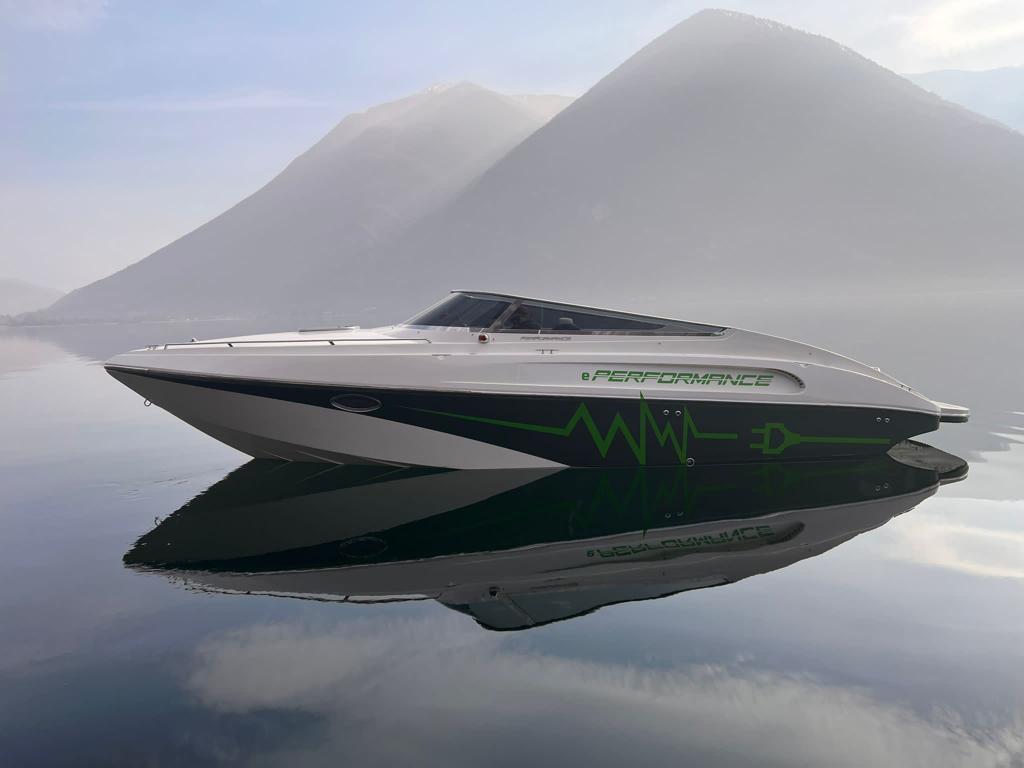
Rather than setting up to build complete boats with integrated drives, other boatbuilders have decided to enter the high-speed electric boat market by marrying their hulls with high-power outboards or inboards from electric motor manufacturers such as Evoy and Vision Marine.
At 2022’s Cannes Yachting Festival, the quiet speed of the Evoy Storm outboard (225kW ≈ 300hp) featured on an Axopar 25. Norwegian electric inboard and outboard motor manufacturer Evoy is now also partnering with Tideman, known for its rugged HPDE workboats, and French builder Iguana on a hydrofoil amphibious boat.
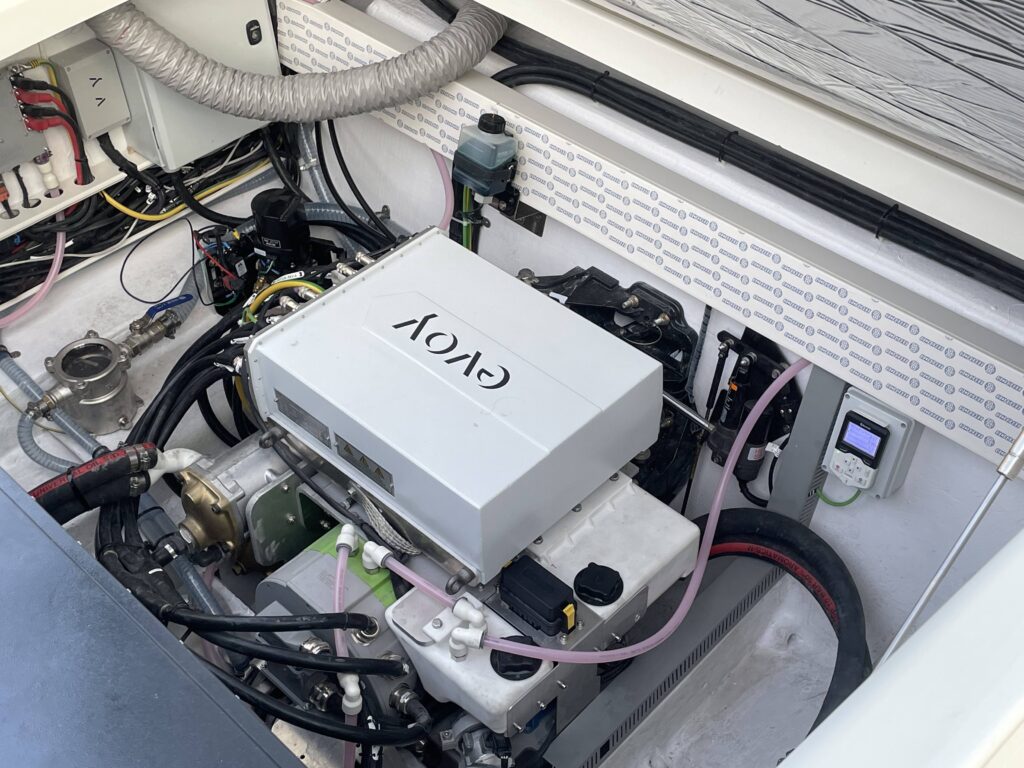
On inboard development, Evoy is collaborating with Norwegian boatbuilder Goldfish to incorporate its Hurricane inboard system on an X10 RIB utility boat. Evoy is also working with Italy-headquartered Performance Boats on its e801 speedboat. It will connect a Hurricane 400hp+ all-electric inboard system with a Mercury Alpha sterndrive on the 8m (26ft) boat. The manufacturer says the model will reach speeds of over 50 knots.
RIBs and tenders
Vita Yachts, a marine technology company that develops high-performance electric products, has reported a significant increase in demand for electric solutions for superyacht tenders as yachts move to reduce the environmental impact of their operations. For its 7m RIB Seal, as well as its Lion luxury runabout, Vita has built a proprietary electric propulsion system and has now set up a drivetrain division, which is providing the motors, batteries and software for Hodgdon Tenders in the US and UK superyacht tender builder Falcon for its upcoming Falcon E8.
RS Electric – a division of the RS Marine Group – has launched its Pulse 63 RIB with integrated electric drive. The boat was originally conceived as a coach boat for sailing clubs, but also has options and fittings for use as a workboat, tender or family leisure boat.
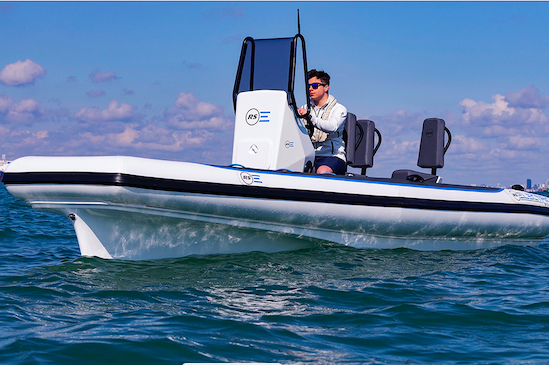
Global sailing competition SailGP used electric RIBs in operational roles as part of its sustainability push, with Pulse 63s used in Plymouth, St Tropez and Cadiz for a combination of purposes, including as media boats and as a coach boat for the SailGP Inspire programme (used for both coaching and tow foiling).
RIB manufacturer Highfield was one of the earliest advocates for electric potential, and with a distributor network in 45 countries, the company is opting for what it calls ‘an agnostic’ approach to electric outboard suppliers. Depending on the market and the boat size, a Highfield can be purchased with outboards by ePropulsion, PureWatercraft or Mercury’s new Avator 7.5e. It also introduced the world’s first RIB with electric jet propulsion by New Zealand’s ZeroJet.
The ZeroJet motor is designed as an option for OEMs, and in addition to Highfield, the manufacturer is working with companies including fellow New Zealand boatbuilder Offshore Cruising Tenders.
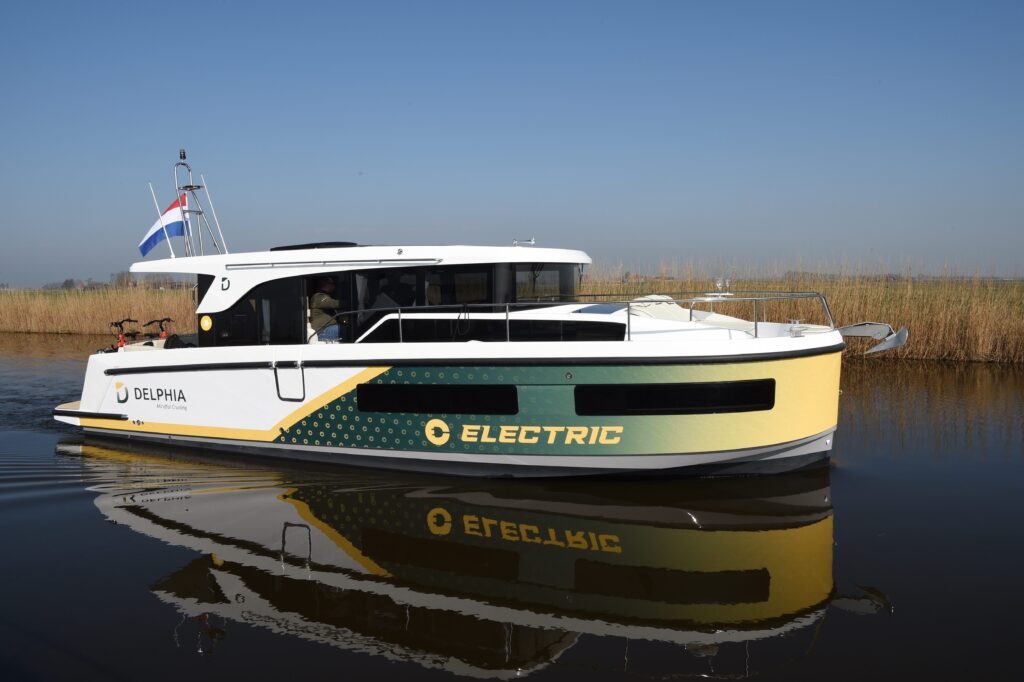
For a clear sign of electric motorboats gathering momentum, then look no further than the largest boatbuilder in the world, Beneteau Group. Two of its more recently acquired brands have pivoted towards electrification. Delphia now has a two-boat range of electric-only boats and has committed to only building electric boats by 2024.
There is a new addition to the Four Winns range, too, the H2e, a 22ft (6.7m) bow rider powered by a 134kW Vision Marine outboard motor. This is a regular-looking sub-25ft bow rider, the likes of which you see thousands of across the waterways of north America, powered solely by electricity. Times are changing.
What’s likely to be next?
Most of the aforementioned builders are likely to add to their stable this season, and leading brands including Greenline have confirmed new electric and alternative propulsion models are imminent. American boatbuilder, Chris-Craft, has also unveiled a prototype electric model, the Launch 25 GTe, which also has a sterndrive inboard-outboard configuration.
Bellini Nautica in Italy, which boasts the world’s most complete collection of classic Riva boats, is partnering with Lanéva Electric Boats of Monaco to provide plug-and-play electric refits for legendary Riva runabouts including the Tritone, Ariston and Aquarama.
There are also a number of electric boat manufacturers, which have been accepting orders for the past year and are scheduled to deliver in 2023. A case in point is Canada’s Voltari, which has combined carbon fibre racing hulls with a high-performance electric drivetrain first demonstrated in 2012.
Arc One is a watersport tow boat developed by alumni of the Space X rocket development team.
Alongside what Candela has in the pipeline, several other electric hydrofoiling boats are also poised to enter the market, including models from Edorado in the Netherlands and Navier in the US.
Jet drives
In the field of jet drives, classic boatbuilder Hinckley of Maine is using jets in a hybrid electric/diesel configuration developed with Twin Disc that allows the owner to use diesel to quickly get to offshore areas, and switch to electric when there to cruise in silence.
Another established US builder, Hacker-Craft, worked with Ingenity Electric to provide the inboard propulsion for its 30-knot Hacker-Craft 27 Sport model. Ingenity Electric has now signed a multi-year supply agreement to provide and install all-electric drivetrains in new Hacker-Craft Boats.
In the UK, Pixii introduced the Pixii SP800 at last year’s Green Tech Boat Show. The 8m (26ft) sport model, built using aluminium and other recyclable materials, has twin electric jets, battery packs with combined 150kWh energy capacity and gives an estimated top speed of 40 knots.
The high-power electric outboard of choice in the US is the E-Motion 180-e from Vision Marine Technologies. Axopar has also chosen the 180-e for its electric boats in the market.
Electric sail
Electric motors are making rapid inroads in the sailing sector.
It was only in August 2022 that the Arcona 415 became the first sailing yacht with an electric motor as the standard propulsion system. Now, a shortlist of other companies that have begun offering electric as an option includes Contest, Domani, Elan, Saffier, Spirit and X-Yachts.

Beneteau’s Oceanis 30.1 is now available with all-electric propulsion and the First 44 (pictured above), which won a Boat Builder Award at METSTRADE for Environmental Improvement in Manufacturing Process, is available as an electric hybrid.
Spirit Yachts has revealed a significant uptick in customer interest in re-gen power options as well. Based in Suffolk on the east coast of the UK, Spirit is working with a few suppliers of re-gen technology and electric propulsion, testing new systems before fully committing. Currently in the mix are Torqeedo, Oceanvolt and, lately, ePropulsion (destined for the second Spirit 30).
Electric marine motors
Mercury Marine, one of the world’s largest manufacturers of internal combustion engines, entered the world of electric motors with the Avator 7.5e (7.5kW ≈ 3.5hp), which will be followed by the 25e and 30e models.
There is also widespread talk that Honda will be releasing an electric outboard in the very near future. A prototype has been on display at more than one boat show, along with the swappable battery packs the company has made available for electric scooters.
ePropulsion, which has been building 1kW to 6kW electric outboards and pods since 2012, introduced its first inboard systems in 2022. The I-Series has 10, 20 and 40kW models with a larger H-100 (100kW) model engineered for boats 18-30m (60-90ft) with displacement up to 200 tons.
Torqeedo has a broad range of electric motors, from kayak outboards to the Deep Blue hybrid line, with 25 to 100kW systems. The Munich-headquartered marine electric drive specialist is now working with Proton Motor Fuel Cell, which makes hydrogen fuel cells for electric trucks and buses, to offer fuel cell range extenders for Deep Blue setups.
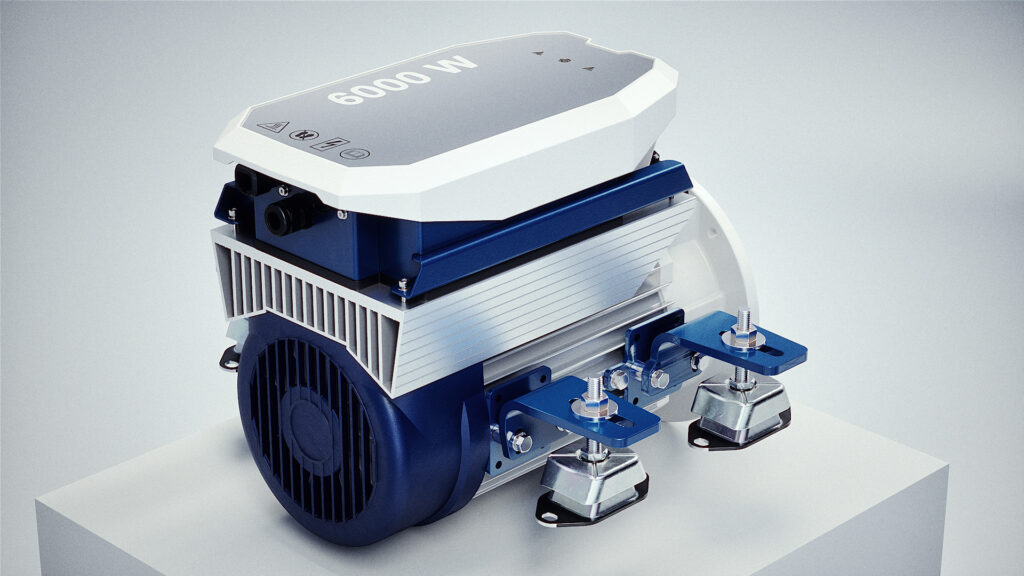
Vetus has been in electric motors since 1982, when it launched the world’s first electric bow thruster for pleasure craft. After introducing an electric inboard in 2000, the company announced a range of three air-cooled propulsion systems for boats up to 8 metres in January 2023.
Oceanvolt, a pioneer in hydrogeneration with its ServoProp saildrive, wrapped up 2022 by increasing power output from its modular AXC drives by about 20 per cent and completing a successful crowdfunding campaign with a total investment of almost €1.46 million.
As for compelling new entries in electric boat motors, Germany-headquartered Molabo, has a 48V motor that can generate 50kW of power; Propel is offering high-efficiency axial flux motors in both inboard and outboard configurations, and RAD Propulsion has a unique design in which only the lower leg rotates, not the entire motor.
DewJet of Turkey has developed a range of electric outboards from 30-90kW (40-120hp), which use an axial flux motor with a thruster-like tunnel to increase power efficiency and reduce wake. And Finx Motors in France completed a €6 million funding round and has plans for a mass production facility to be in place by the end of 2023. Finx’s innovative motor is patterned on the movement of a dolphin fin, using a membrane and pulsing motion to move water and propel the boat.
ThrustMe, Temo and Remigo have all produced lightweight electric motors for dinghies that deliver surprising acceleration with 1kW or less.
It is clear new products are coming thick and fast. Trends are changing. And as the options increase, so too will the consumer adoption of electric and hybrid boating.
This article first appeared in MIN’s April 2023 print edition under the title Electric Pace, in association with www.plugboats.com.
The post In Focus: The electric pace of new products coming to market appeared first on Marine Industry News.
